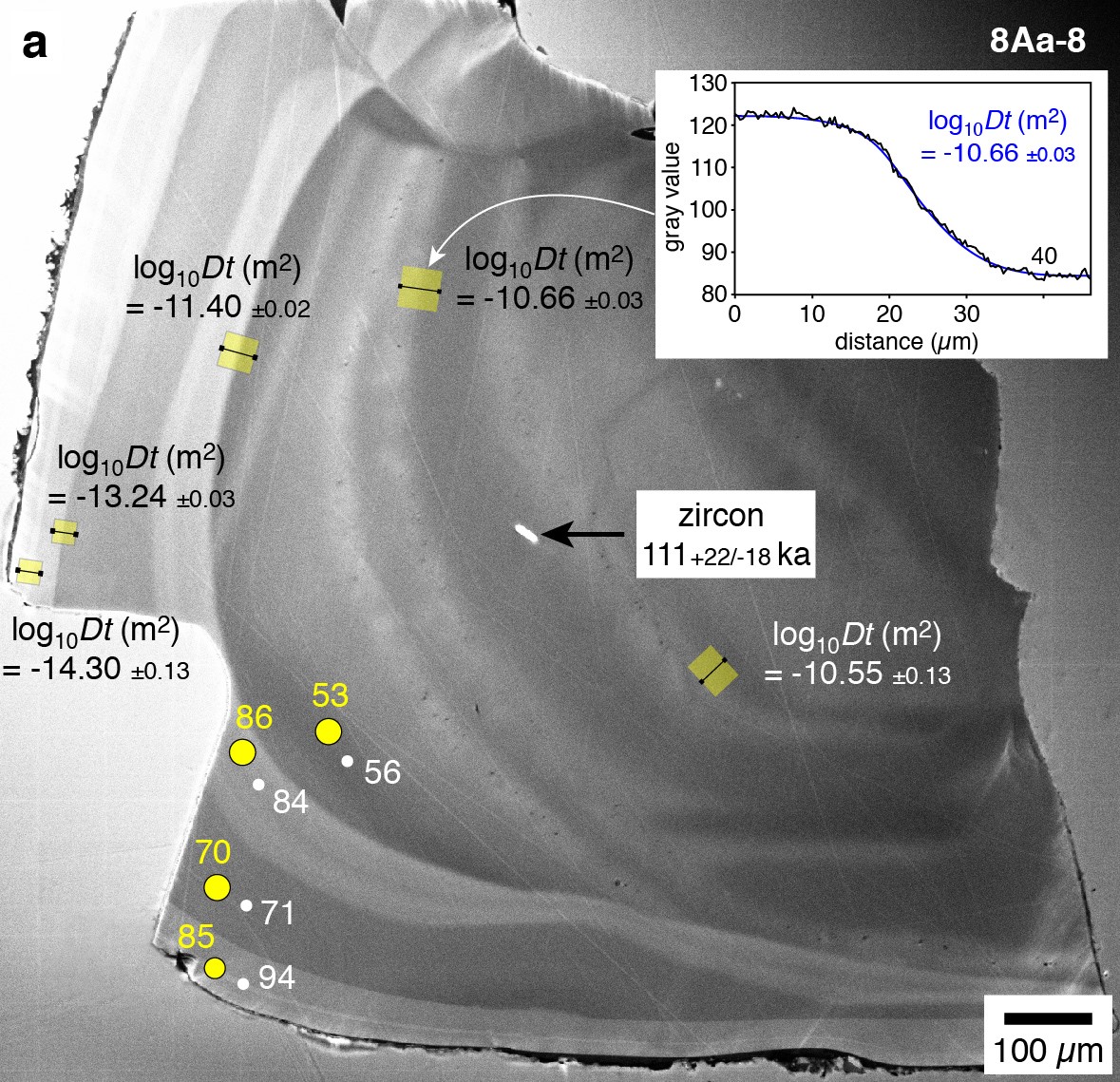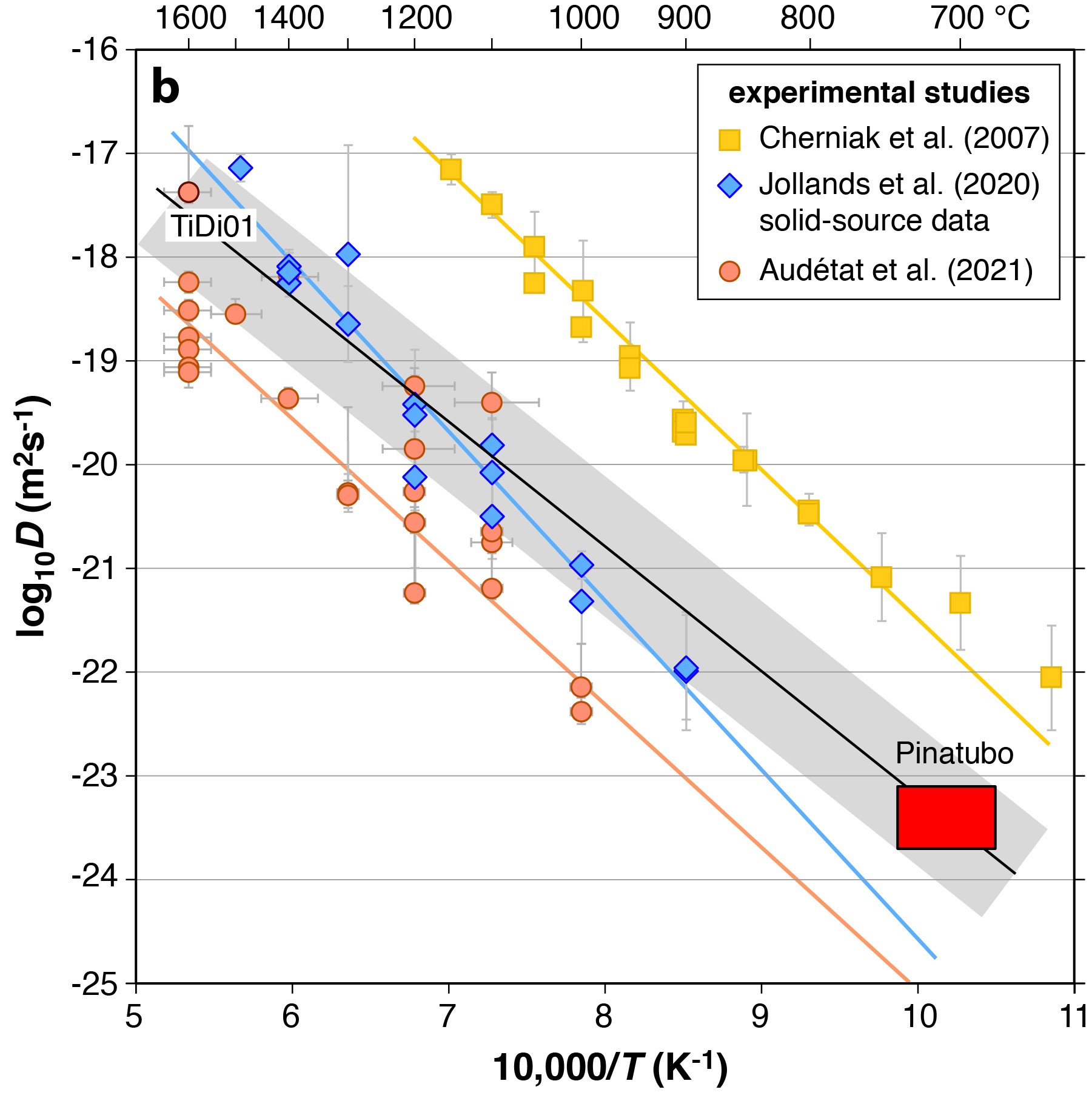
New constraints on Ti diffusion in quartz and the priming of silicic volcanic eruptions
Andreas Audétat, Axel K. Schmitt, Raphael Njul, Megan Saalfeld, Anastassia Borisova, Yongjun Lu
Nature Communications, https://doi.org/10.1038/s41467-023-39912-5
Titanium diffusion chronometry in quartz is an increasingly popular tool to reconstruct the time scales of magmatic, metamorphic, and hydrothermal processes. However, currently available experimental calibrations of Ti diffusion rates in quartz differ by nearly four orders of magnitude, reflecting the fact that experimental determination of very slow diffusion rates is extremely challenging.
To obtain a reliable data point at geologically realistic temperatures, the ages of tiny (15-40 µm) zircon inclusions in quartz phenocrysts from the 1991 Mt. Pinatubo dacite eruption were constrained by U-Th disequilibrium age dating, and the obtained ages were used in conjunction with Ti diffusion profiles measured at nearby quartz growth zone contacts to retrieve diffusion coefficients. All 18 analyzed pairs of zircon inclusions + diffusion profiles returned similar diffusion coefficients, suggesting that the zircon inclusions grew only shortly before entrapment, and that the quartz crystals were stored at a relatively constant temperature.
Application of the newly obtained Ti diffusion coefficients to Ti diffusion profiles measured at the contact between Ti-poor cores and Ti-rich overgrowths in quartz crystals from thirteen silicic volcanic tuffs worldwide suggests that the magmas erupted mostly decades to thousands of years after the magma chambers were rejuvenated by ingressing hotter magma. These time scales are 1.5-2.0 orders of magnitude longer than those obtained based on the first experimental calibration of Ti diffusion in quartz, and ca. 1.5 orders of magnitude shorter than those obtained from two subsequent experimental calibrations.


Figure: (a) Principle of how diffusion coefficients were obtained from the age of zircon inclusions and Ti diffusion profiles measured at nearby quartz growth zone contacts. (b) Comparison of the newly derived average partition coefficient at 710±30 °C (red box) with previous experimental calibrations.
Tel: +49-(0) 921 55 3700 / 3766, Fax: +49-(0) 921 55 3769, E-mail: bayerisches.geoinstitut(at)uni-bayreuth.de